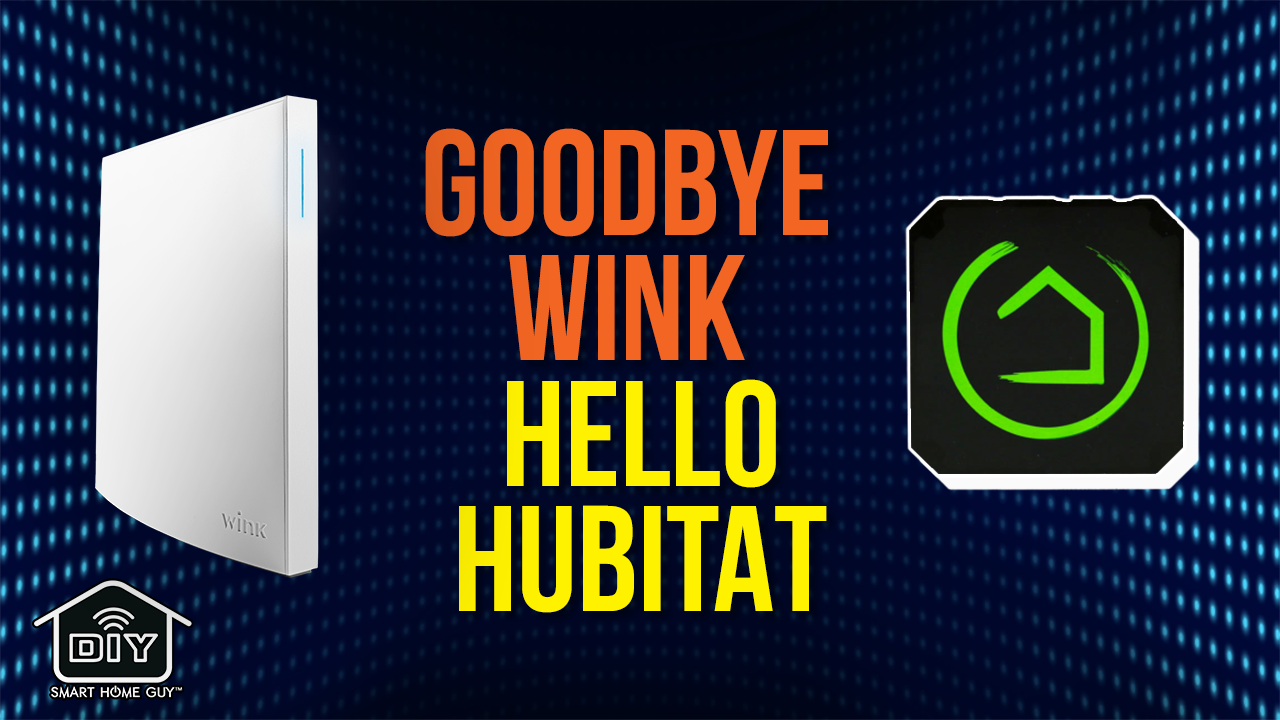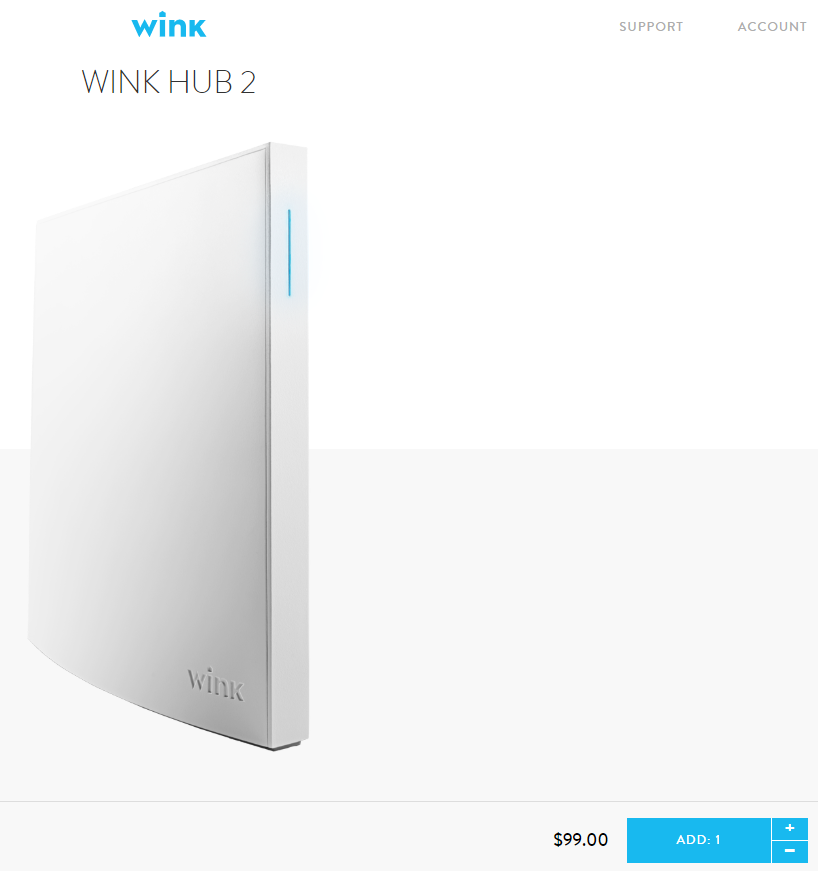Wink Introduces a new Subscription Model

For me – talking about Wink is a little akin to talking about a ex high school sweetheart. Fond memories of beauty, excitement and passion that ended for no other reason than we grew apart and our life directions no longer aligned. That was me and Wink. As an old X10 guy, Wink was everything I was looking for. It was sexy, fast, and affordable. I made over fifty videos that were either directly about Wink, or how to do things with Wink. I loved my Wink hub.
As the relationship matured, my hunger for more powerful automations grew. And in that growth I needed to augment my Wink Hub 2 with Stringify. It was great. Finally a powerful rules engine that could make Wink hub into something it had never been – a real automation hub. Then came the Xfinity purchase of Stringify and along with it the shuttering of the public facing rules engine. I knew I had to change.
My family had grown accustomed to all the cool stuff that Stringify had enabled, I couldn’t turn back now. So, I looked around. And around. For me, I settled on Hubitat. But we’ll get into that more in a bit.
Back to Wink
For months Wink has been plagued by rumors and bad press. Throw in the inability to purchase a new hub for many months, it’s no wonder people have been developing a negative image of a company they once loved and trusted. Go to any Wink Hub oriented social media group and you’ll see people complaining being met with the true Wink hardcore believers. I stopped visiting those groups for the most part. Too much social divide for my tastes.
So here we are – a company that has only two sources of income: 1) selling hubs and other Wink products; 2) charging companies to integrate with the Wink platform. It’s well know that Wink.com had been out of gear for months. Today I see that product seems to be in stock (or coming soon) and the website has been overhauled. With the prospect of hubs selling again, I’m sure this means that device manufacturers will be more agreeable to paying the integration fees, which one anonymous source told me was $5,000 plus a maintenance fee. This was two years ago, so I have no idea what the current model is.

Now, Wink has made the bold decision to charge a monthly fee on top of the fee to purchase the hub. It’s a modest fee of $4.99 per month, which is roughly $60 per year. You essentially purchase the hub again after 18 months. This is more than Ring charges for their cloud storage (per device), and may well be worth the cost. I’ll leave that up to you to decide. If Wink releases a new hub, you will undoubtedly be required to pay for it, if you want the upgrade. And let’s assume that they release a new hub every two years. Your total cost of ownership each time you purchase a hub is a whopping $218.76 when you go to shell out your next $99 for the upgraded hub.
I’m not criticizing Wink for this decision. Logic tells me this was a condition of whatever cash has been infused into the company. No, I have no direct knowledge of such an infusion, but the money had to come from somewhere. It’s highly unlikely to me that they had been sitting on a pile of cash while everything was out of stock, and just now decided to get product back in stock and charge for a subscription.
The Mysterious ‘Upgrade or your Offline Forever’ email
On March 16, 2020 Wink signaled their intent in my opinion. An email went out to all users that they needed to upgrade their units or they would be forced offline. This, with no doubt in my mind, was putting in place all the necessary components to make this very move. The deadline for the upgrade was May 30, 2020 and it appears that they have decided to roll out the Subscription aspect before the required update. So the new requirement to continue on your Wink Hub is Upgrade and Pay before May 13.
Where Does That Leave Me?
As stated, I don’t use my Wink for anything other than the occasional product testing. So for my home, it does not make sense for me to pay the money. Strictly speaking for my personal home automation needs, paying Wink the monthly fee is akin to paying for a face lift for my ex high school sweetheart. Not likely.
As for my blogging and video work, I’m going to opt out as well for the time being. It’s hard to pay attention to all platforms, even when I don’t pay a monthly fee. When I test against a hub I always need to be mindful of my audience interest factor, my time, and the potential impact of the video on the overall community I serve. I simply can’t justify paying the fee from a channel strategy standpoint. Sorry Wink loyalists, it’s nothing personal.
Over time, I may change my mind. I’ve done it before.
My focus for hub related videos will largely center around Hubitat, since that is what I use on a daily basis. It’s the most time efficient decision for video production.
My focus for product related videos will remain Hubitat centric, but I will continue to include SmartThings and Vera as the product compatibility allows. I will no longer be testing products within the Wink environment.
If you’re thinking about jumping ship from Wink – that is a decision that is entirely up to you. Which alternative is best? Too many factors to give a straight forward answer. Most likely if you are coming from Wink, you’re best to go with either Hubitat or SmartThings. I chose Hubitat, but that was what was best for me.
Aren’t All Hub Manufacturers in Danger of Charging us or Shutting Down?
Of course they are. And that was not factored into my decision. Hubitat, at this current point in time is blessed with a growing market base and a lot of hubs in stock. I have no direct knowledge of how many hubs they sell, but at $80 a pop, they would need to sell hundreds of hubs a month (maybe closer to a thousand or more) just to cover costs (salaries, servers and such), not to mention the cost of hub production. It’s unclear how well they will do in the long run if they don’t start selling products other than hubs, or moving to a subscription model as well.
At least for now, Hubitat is completely local. If they do go under, all you need to do is nothing. If they decide to charge for subscriptions, all you would need to do is not upgrade to the version that would enforce it. This may be a bit trickier. We are accustomed to rapidly adopting the latest release on Hubitat, so it would be very easy for them to pull a Wink-like move and force the update and then reveal their plan to charge for continued use. I like to believe that Hubitat is above this kind of behavior. They have a history of being open and transparent (unlike Wink) and I like to think they would at least give us the option. But you never know.
Vera has already taken a different approach, and that is offering fully monitored security subscriptions services, as well as products. Pay for the hub, use the hub as a DIY home automation controller. Want monitoring? Pay for that as a subscription. I really like that model. I do find Vera a bit too complicated for the entry level DIY’er, but others enjoy it. Let them have their fun. Vera is also local control, which puts it in the same league as Hubitat in many regards. Unless there’s a forced update (which Vera has been known to do), you can always opt out of any subscription model by not taking the update.
SmartThings would be the easiest to disrupt in my opinion. All native device handlers are local to SmartThings, but all add-on (custom) device handlers and custom apps run in the cloud. So do most of your automations. This was one of the reasons that I went to Hubitat (again, it was good for me but maybe not everybody). If SmartThings goes under (unlikely since they are backed by Samsung), you’re mostly screwed. If Samsung determines that the benefit of collecting and selling your data (sterilized and aggregated) is not worth the cost of maintaining the servers and staff, they could easily charge a subscription and not paying would land you in the same place it would with Wink – pay up or get lost.
Now I just need to figure out how to tell my dad that his Wink is going offline in a few days. Since it only controls one light, I’m pretty sure he won’t be paying the $4.99 per months for the occasional voice command to turn the light off.
As always – cheers

